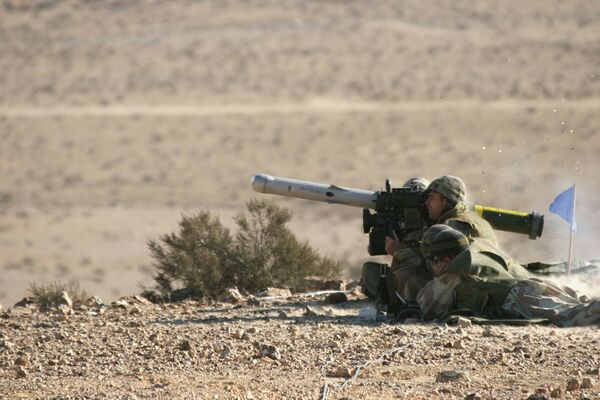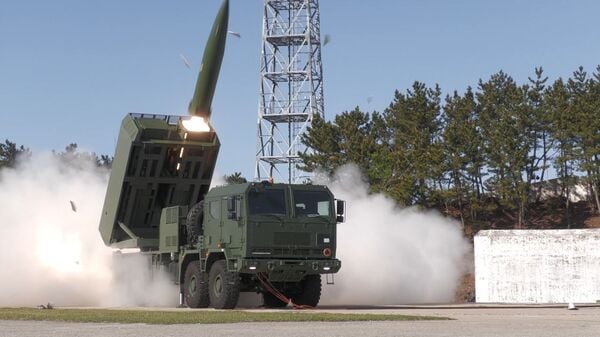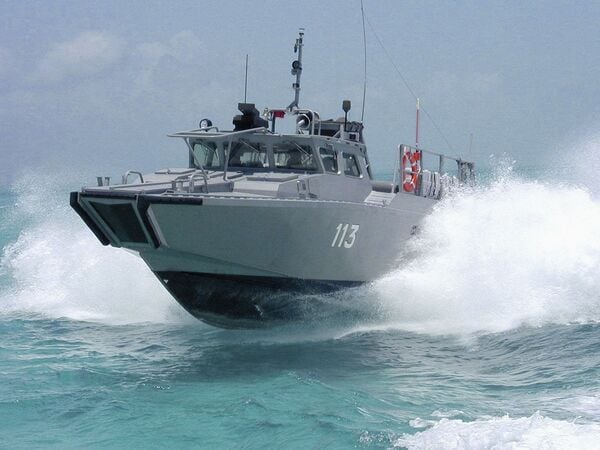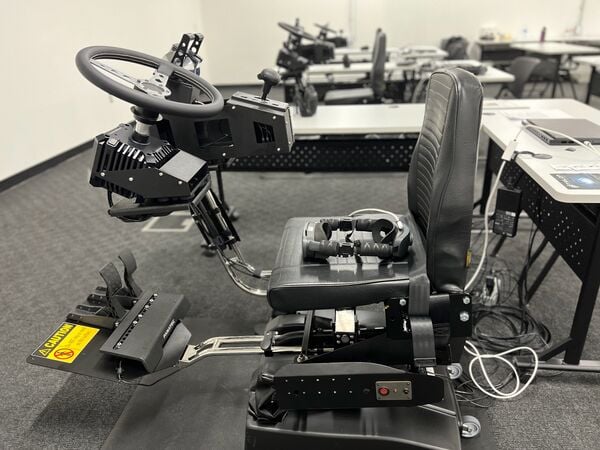- About
- Intara
- Capabilities
- Advisory
- Resources
- News
- Store
Australia orders Spike LR II ATGMs for Boxer CRVs
23 August 2023
by Kapil Kajal


The Spike LR II (pictured above) is being tested by an infantry team in manportable configuration. This is a fifth‐generation portable fire‐and‐forget ATGM system. (Rafael Advanced Defense Systems)
The Australian Department of Defence (DoD) has signed a contract with Rafael Australia to procure an unknown number of Spike LR II long-range anti‐tank guided missiles (ATGMs) for Boxer 8×8 Combat Reconnaissance Vehicles (CRVs), the company announced on 22 August.
According to Rafael, the procurement is part of Australia's Guided Weapons and Explosive Ordnance (GWEO) Enterprise, which aims to equip the Australian Defence Force (ADF) with next-generation guided weapons.
This is the ADF's first procurement as part of the GWEO Enterprise, Rafael said. “This acquisition will support the Boxer CRV capability being delivered [to the Australian Army] under Project Land 400 Phase 2.”
The Australian Army is procuring 211 Boxers from Rheinmetall Defence Australia (RDA) under a USD5.2 billion contract signed in 2018 as part of Project Land 400 Phase 2.
According to Janes Weapons: Ammunition , the Spike LR II is a fifth‐generation portable fire‐and‐forget ATGM system. The missile weighs 12.7 kg with a maximum firing range of 5.5 km.
Poland orders second batch of Chunmoo MRLs
29 April 2024
by Nicholas Fiorenza


The AA signed a second executive contract with Hanwha on 25 April for 72 K239 Chunmoo MRLs (pictured), several thousands of missiles, and technology transfer. (Hanwha Aerospace)
The Polish Armaments Agency (AA) signed a second executive contract with Hanwha Aerospace for 72 K239 Chunmoo multiple rocket launchers (MRLs) on 25 April, the Polish Ministry of National Defence (MND) and the South Korean company announced the same day. The USD1.6 billion contract also covers the delivery of several thousands of missiles with ranges of 80–290 km, including the 600 mm CTM290, and technology transfer.
The Polish MND said on its website that it expected the contract to have a significant impact on the development of the Polish defence industry, with the technologies acquired allowing the establishment of a capability to carry out repairs and modernisation, as well as produce spare parts for the MRLs and launch pods for 122 mm rockets produced by MESKO, part of Polska Grupa Zbrojeniowa (PGZ).
Saab's Skapa initiative aims to speed technology into customers' hands
24 April 2024
by Jeremiah Cushman


Saab has developed an autonomy package for its CB 90 fast boat and demonstrated its ability to navigate the Swedish coast. Pictured above is a CB 90 that was delivered to Malaysia. (Dockstavarvet)
Saab has established a new business function to revamp how it develops and delivers products to meet changing customer requirements. Skapa, a Swedish word that means “to create, to make, or to shape”, will focus on solving customer and stakeholder problems at speed, Erik Smith, president and CEO of Saab in the United States, told reporters on 23 April. “Skapa will accelerate the development and deployment of cutting-edge solutions to our warfighters” at pace, he said.
XR Training-led consortium wins USMC ACV simulator contract
24 April 2024
by Giles Ebbutt


The XR Training consortium's USMC Amphibious Combat Vehicle driver simulator in its seat configuration with two DoF motion platform. The Vive HTC Elite headset is on the seat. The Instructor station laptop is on the table behind. (XR Training)
A consortium led by XR Training has been awarded a contract by the US Marine Corps (USMC) under an Other Transaction Agreement (OTA) to produce a driver training simulator for the new Amphibious Combat Vehicle (ACV). The value of the contract was not disclosed but Neil Levin, XR Training CEO, told Janes that it was “in the high seven-figure area”.
The consortium, which also includes Talon Simulations (hardware), 302 Interactive (software development), and Theory Studios (modelling and visuals), will deliver 81 simulators by the end of 2024, followed by a two-year training and sustainment period. Most simulators will be deployed to Camps Pendleton and Lejeune, with some for use for “schoolhouse” training and some for deploying units.
The Australian Department of Defence (DoD) has signed a contract with Rafael Australia to procure an...
Latest Podcasts
Iran Israel analysis
In this podcast Janes analysts discuss the Iranian attacks on Israel on the 14 April. They highlight the military systems used by Iran and the performance and impact of these on Israel. They also discuss the implications of this attack goi...
Listen nowJanes Case Studies
Using Janes Intara to build a common intelligence picture: Russian build up on the Ukrainian border
View Case StudyNews Categories
 Land Details
Land Details